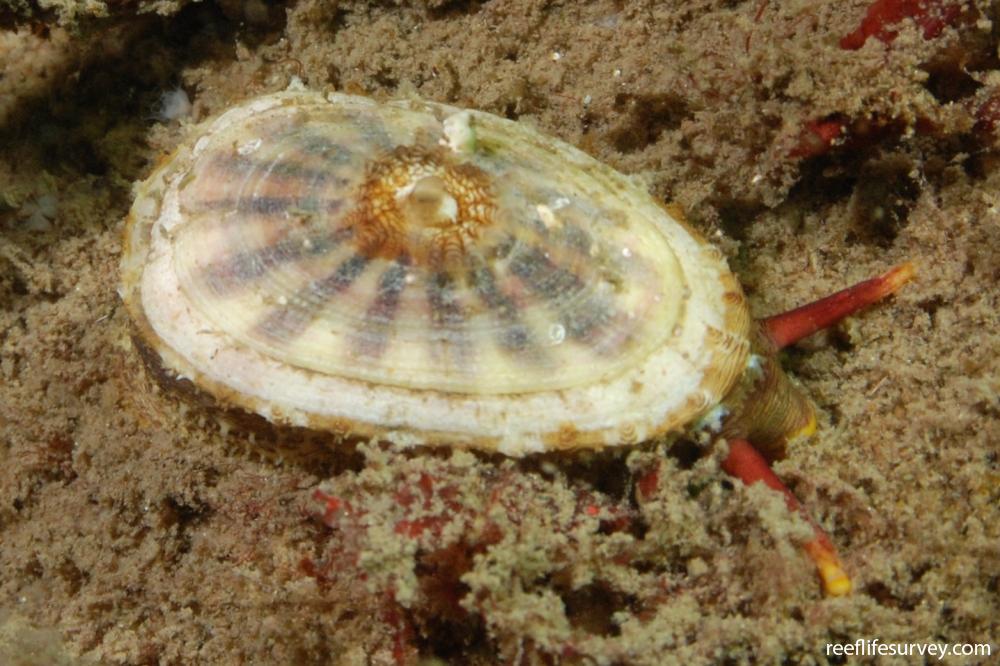Fissurella oriens
Small banded keyhole limpetSame Genus
Distribution
Temperate South America
Description
A gastropod with a flattened, oval based conical shell, with a small hole in the peak. Purplish bands radiate out from the hole in the shell, the shell is often encrusted with algae and barnacles. The animal itself has a brown and white flecked body, and a reddish head with two long antennae and a thick short trunk like mouth, the tips these are yellow or cream.
Information
Max Size: 7 cm
Sea Temperature Range: 1.7-18.3°C
Depth: 0-30m
Habitat Generalization Index: N/A
Also referred to as the SGI (Species Generalisation Index), this describes the habitat niche breadth of the species. Species with values less than 15 are found in a relatively narrow range of reef habitat types (specialists), while those over 25 may be found on most hard substrates within their range (generalists). Learn more here.
Conservation and Rarity
IUCN Status: Not Evaluated
Occurrence: Widespread (94.1% of sites)
Occurrence describes how often the species is found on surveys within its distribution. It is calculated as the % of reef sites surveyed by RLS divers across all the ecoregions in which the species has been observed
Abundance: Many (14 per transect)
Abundance is calculated as the average number of individuals recorded per RLS transect, where present.
Edit by: Joe Shields
















